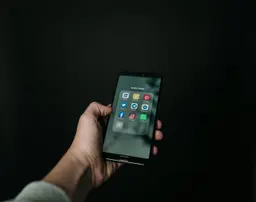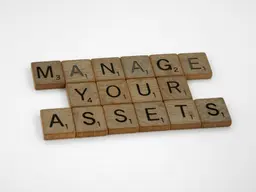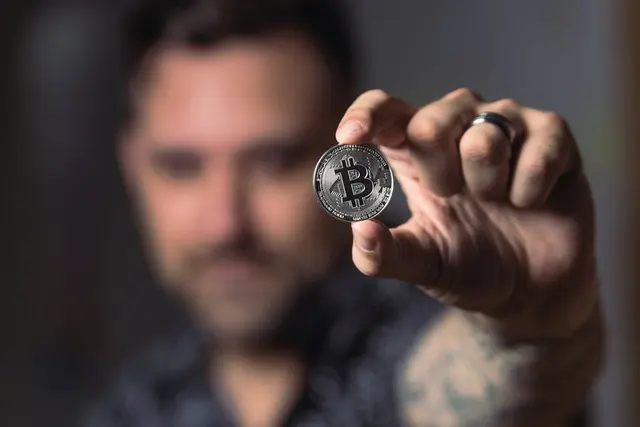It’s an odd thought—your final day arriving, yet your online footprints remain. No grand exit button. Life fades, but those snapshots of personal triumph, those candid confessions, they endure somewhere on a digital server.
Some folks find comfort in that sense of permanence. Others feel uneasy about profiles drifting in limbo.
But there’s a question that worries us: Why share those accounts even after we’re gone? It’s not about showing off trophies—it’s about letting loved ones keep a small piece of you close.
There’s a pulse behind every post, and when you’re gone, those stories can linger, giving friends and family a way to remember without rummaging through boxes.
A little planning keeps those memories from disappearing overnight. It spares the people closest to you from the shock of an abrupt deletion or the hassle of chasing down support lines.
By facing the question of sharing your social media logins—or at least deciding how to preserve them—you ensure these footprints won’t slip into the void.
The Comfort of Memorializing
Setting up a plan isn’t just about policy or procedure—it’s also about sparing your loved ones the jolt of finding your account inactive or, worse, deleted.
Facebook for example, lets you memorialize profiles. That process can keep your timeline intact, preserving each photo, each message, each fleeting joke.
For some, it’s a valuable place to mourn.
But what happens if you don’t have a clear plan of succession for your account?
If you take a few steps now, you spare them from all that hassle. A note about your login details or a quick conversation with loved ones about your wishes can head off a tangled web of policies and phone calls.
Not a bullet-proof plan, however it’s a small effort that can yield a major benefit.
A Quick Plan for Peace of Mind
Pick a trusted person (“caretaker”)
This might be a family member or a friend. They know what you want—delete, memorialize, or simply keep it running.
Store your passwords
Keep them safe somewhere, whether on paper in a locked drawer or in a secure digital vault.
Write short instructions
One page is enough. Outline your wishes, so no one scrambles for answers later.
Check each social media platform’s rules
Some sites let you name a legacy contact. Others default to account removal if inactive.
Lining up these pieces today makes tomorrow less unsettling for everyone else.
Privacy and Security Concerns: Shielding Your Social Media Footprint
An account left stagnant can become an easy target for hackers. It holds personal messages, private photos, perhaps payment details. Once compromised, it can wreak havoc on your memory—turning your profile into spam or worse.
By handing off login details or using a trustworthy service, you ensure your data doesn’t land in the wrong hands. You don’t want your social media accounts floating in limbo.
It’s not about giving away control while you’re alive. It’s about protecting your identity once you’re gone.
Avoiding Account Hijacking
A stale account is bait for digital prowlers—especially once there’s no one around to check. So how do you keep trouble at bay?
Update your passwords regularly.
Use two-factor authentication if possible.
Keep backup codes in a place that is easily accessible to you or loved ones.
These small measures block the most common break-ins. Once you’re gone, you don’t want faceless strangers messing with your profile—turning it into a carnival of spam. By staying a step ahead now, you preserve your peace of mind and shield your name from roving hackers.
Tools for a Seamless Transition
Some folks manage their data the old-fashioned way—a little notebook on a shelf. Others opt for digital solutions. The goal is the same: give a designated person the key to your online world when the time comes.
Our solution—DigitalLIFEBox—stands out for its simplicity. You deposit your login details, you name who gets access, and that caretaker receives the information if you’re no longer around. No frantic searching. No confusion. Just a smooth handover.
Beyond securing your logins, it’s also worth considering what final message you’d want to leave. With DigitalLIFEBox, you can store not just access details but also prepare a farewell post or an out-of-office message. It’s a thoughtful way to offer closure to loved ones and your wider network when the time comes.
Digital Vault Essentials
Any method that covers these points helps avert chaos.
Reliable encryption.
Easy sharing options for the caretaker.
Clear instructions on when and how to grant access.
We at DigitalLIFEBox cover all three, plus we use blockchain for impenetrable security of your assets and login details.
Emotional Value of a Well-Kept Profile
A social media feed can be more than old posts. It’s part scrapbook, part diary, part confessional. For some, reading a final status or last photo offers a bond with the past. They leave heartfelt messages in comment sections. They gather on anniversaries, birthdays, or tough days.
In that sense, your online presence serves as a gathering spot. It won’t replace real hugs or shared tears, but it can soften the loneliness. People like to revisit happier times—even a silly post from years ago can bring peace in dark moments.
Conclusion
Addressing your digital afterlife isn’t grim. It’s practical. You care for people now, so you might as well care for them down the line. A quick talk about your preferences or a short note about your logins goes a long way.
Memorializing, handing over passwords, or setting up a legacy contact all reduce the mess of red tape.
Life online doesn’t vanish with a heartbeat—these accounts hold echoes of who we were. And when you make a plan, you help others hold on to the good memories without the stress.
It’s a simple act of kindness that keeps your voice alive—long after you’ve gone silent.
Month: June 2025
Transferring a Social Account (Twice)
Let’s say you want your Instagram account passed to your family—but only after a close friend scrubs it for things that don’t need to be part of the permanent record.
Totally possible.
With DigitalLIFEBox™, you can assign multiple transfers for the same asset. In this case, you give access to a friend with a clear instruction: clean up anything you don’t want your family to see. After that, they initiate the next transfer to your chosen beneficiary.
You stay in control—not just of who gets access, but when and why.
It’s not about deleting your past. It’s about shaping what gets remembered, and who gets to see it. Whether it’s one handoff or two, you decide the timeline, the logic, and the trust structure.
Legacy isn’t one-size-fits-all—and neither are the people you rely on to help carry it forward.
Read MoreCan I Schedule Transfers to Happen at a Specific Time, Like Birthdays?
Yes. And it’s one of our favorite features.
With DigitalLIFEBox™, you can set your assets—or even just messages—to transfer on specific dates or events. Want your daughter to get access to a video on her 21st birthday? Or a journal on the anniversary of your passing?
You can do that.
This isn’t about transactions. It’s about meaning. You’re not just planning for death. You’re creating continuity. Moments that matter—delivered, even if you’re not there to witness them.
Some people call it digital legacy. Others call it emotional backup. We just think it’s a better way to stay connected.
Read MoreWhat Happens to My Digital Assets When I am gone?
Most people don’t think about their digital life as part of their estate—until someone they love dies and their entire online presence becomes a locked maze, often impossible to navigate.
Photos trapped in cloud accounts. Crypto wallets no one can access. Subscriptions still billing monthly. And zero instructions about what to do next.
Here’s what we’ve learned: if you don’t decide what happens to your digital assets, someone else will. Or worse—no one will, and everything you built will vanish into customer service purgatory.
That’s why DigitalLIFEBox™ exists.
We help you document what you own, who should access it, and when. You don’t need to wait until your will is drafted. You don’t need to be a tech expert. You just need to care about what happens to your digital life when your real one ends.
And if you’re reading this, you probably do.
Read MoreHow Do I Make Sure My Family Can Access My Crypto If I’m Gone?
Crypto is powerful. It’s also brutal. If you lose the private key, the funds are gone. Forever.
That’s what makes it revolutionary—and risky.
DigitalLIFEBox™ gives you a way to plan for that. You can store wallet info, backup instructions, and specify who gets access and when. Want your partner to get it immediately if something happens? Done. Want it split among your kids after a certain date? Also doable.
The key (literally) is making sure someone knows where your access info is—and when they’re allowed to use it. You can also distribute your key amongst multiple members so through a plan that brings people together when you are gone.
With crypto, there are no second chances. But there is a way to do it right the first time.
Read MoreWhat’s the Difference Between a Trustee and a Beneficiary in DigitalLIFEBox™?
Simple: a Beneficiary receives. A Trustee makes sure that happens properly.
In DigitalLIFEBox™, you assign beneficiaries to specific digital assets—just like you would with a bank account or life insurance policy. A trustee is someone you trust to oversee the process. They help ensure your wishes are followed, especially if you’ve set conditions for when or how things should be shared.
Trustees don’t access your private data while you’re alive. They just act as stewards if you’re no longer around. And you get to choose more than one amongst other policies you can set.
Think of it like this: a trustee is like the referee, and a beneficiary is the one that takes the ball behind the line.
One manages the transfer. The other lives with the outcome.
Read MoreHow Do I Know My Wishes Will Actually Be Followed?
Because we built the system to take human error—and human interference—out of the equation.
With DigitalLIFEBox™, your wishes are recorded immutably on the blockchain. No one can log in and change your instructions. Not us. Not your trustee. Not even you (unless you explicitly update it).
Then, when the time comes, access is only granted if the conditions you set are met—like a confirmed event or trusted verification.
This isn’t about hoping people remember what you wanted. It’s about setting it in stoneit.
Your digital life shouldn’t be left to chance. And with DigitalLIFEBox™, it isn’t.
Read MoreWhat Exactly Counts as a “Digital Asset”?
If it lives online, holds value, or matters to you—it counts.
Digital assets aren’t just crypto and domain names. They’re the Google Drive where you wrote your book. The Dropbox folder with your family videos. The email address you’ve used since college. A text message you want to pass on to a loved one. Your PayPal, your Etsy shop, your Venmo history. Your playlists, points, passwords. Your private notes and published content. Your digital self.
Some of these have financial value. Others are purely sentimental. But they’re all part of your digital footprint—and someone’s going to have to deal with them when you’re gone.
The question is: will they be left guessing, or will they know exactly what you wanted?
A digital asset is anything you’d rather not lose, misplace, or leave unmanaged. DigitalLIFEBox™ helps you track, plan, and protect all of it.
Because your online life is still your life. And it deserves just as much care.
Read MoreCan I Use This Even If I Don’t Own Crypto?
Absolutely. DigitalLIFEBox™ works for anyone with a digital footprint—which, let’s be honest, is everyone.
You don’t need crypto to have digital assets. Your email, cloud backups, social media accounts, digital photos you have stored in the cloud, personal notes, recurring subscriptions—those all count.
This platform isn’t just for tech insiders. It’s for families, freelancers, parents, business owners, retirees. Anyone who wants to protect and pass on what matters—digitally.
Crypto is one part of that story. Not the whole thing.
Read More








